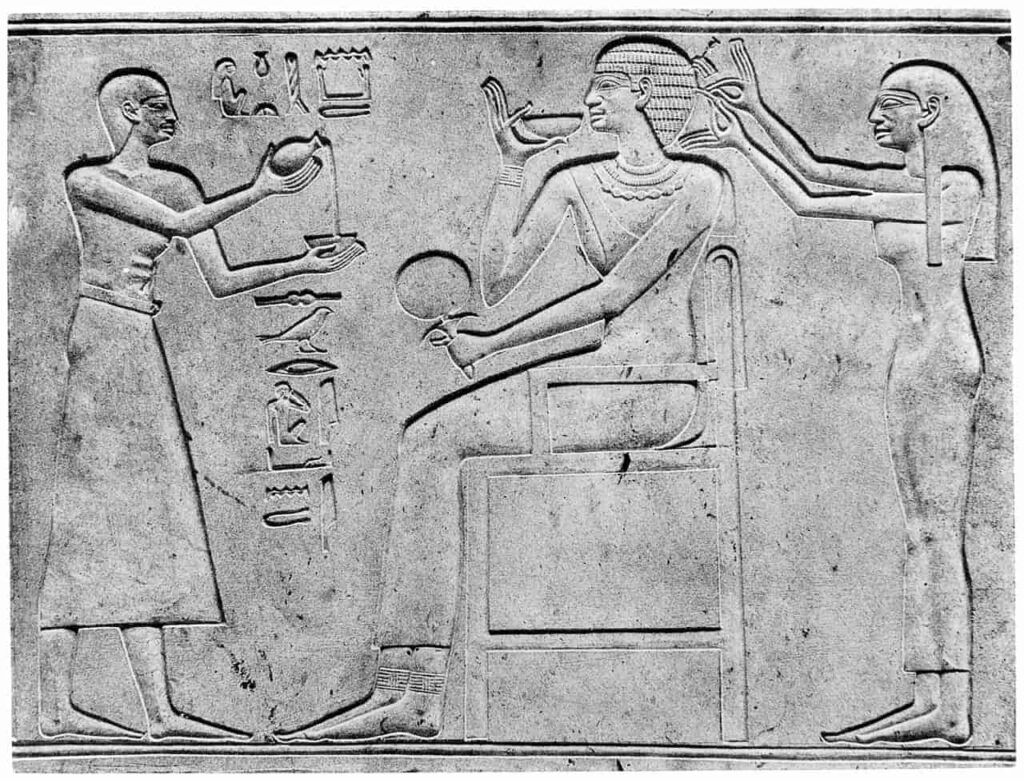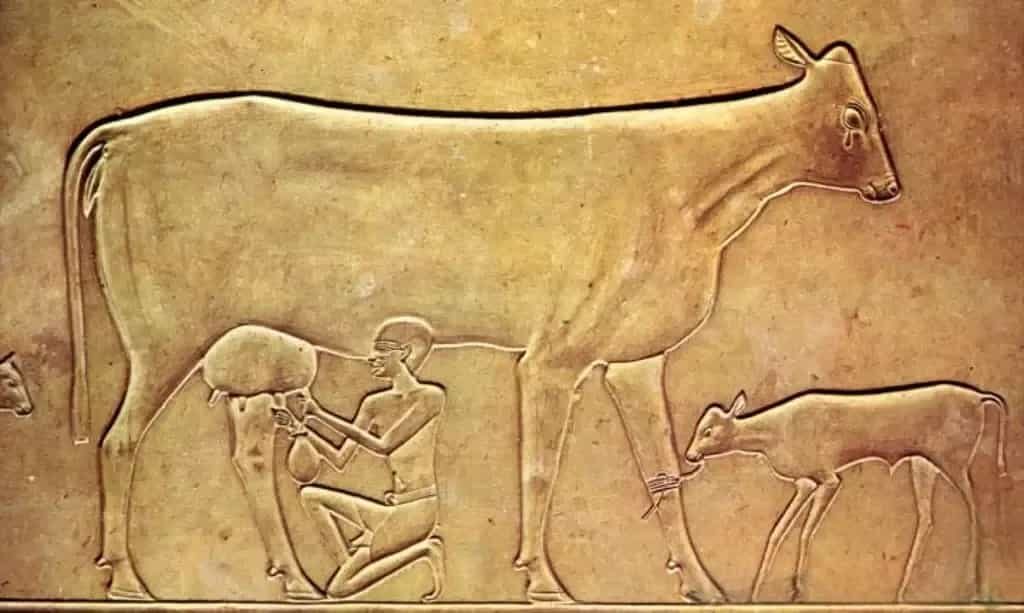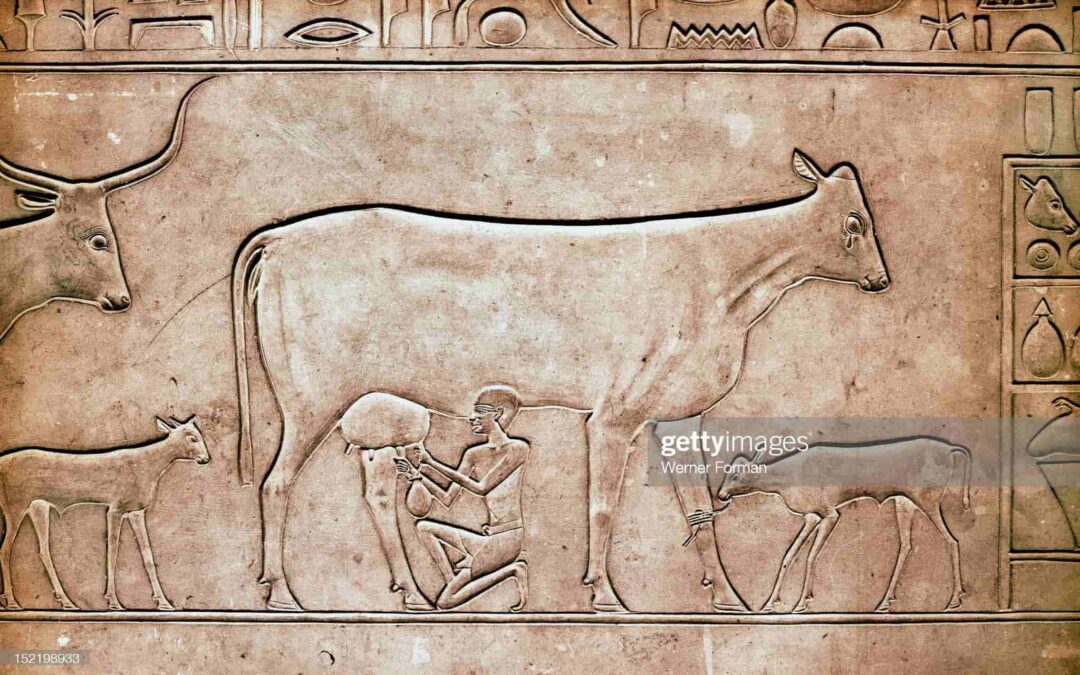A scene unfolds upon the sarcophagus of Kawit, a notable queen consort who was married to Pharaoh Mentuhotep II during the 11th Dynasty of ancient Egypt. This artifact was unearthed within the confines of her burial chamber (DBXI.9) at Deir el-Bahari, and it now resides within the halls of the Egyptian Museum in Cairo.
Dating back to the Middle Kingdom, precisely from the years 2061-2010 B.C., the imagery portrays a moment in which a man milks a cow, while a curious calf investigates a ribbon or some form of rope that adorns its mother’s leg.
Kawit was an queen consort, although she held a lower ranking position in Pharaoh Mentuhotep II’s court. Her tomb and a modest yet exquisitely adorned chapel were discovered in the revered Deir el-Bahari temple complex, nestled behind the primary edifice.
Among the women who shared the title of queen, Kawit and three others were esteemed priestesses of Hathor, a significant deity in the ancient Egyptian pantheon.
Within the Egyptian Museum, Kawit’s stone sarcophagus (JE 47397) now stands as a testament to her existence and legacy. The artwork carved into the sarcophagus portrays the queen with her hair cropped short, seated upon an ornate chair. A servant girl tends to her hair, while another pours drink for her.









